Cryptocurrency Information
Wex.nz: New Zealand Bitcoin Trading Exchange For Cryptocurrencies
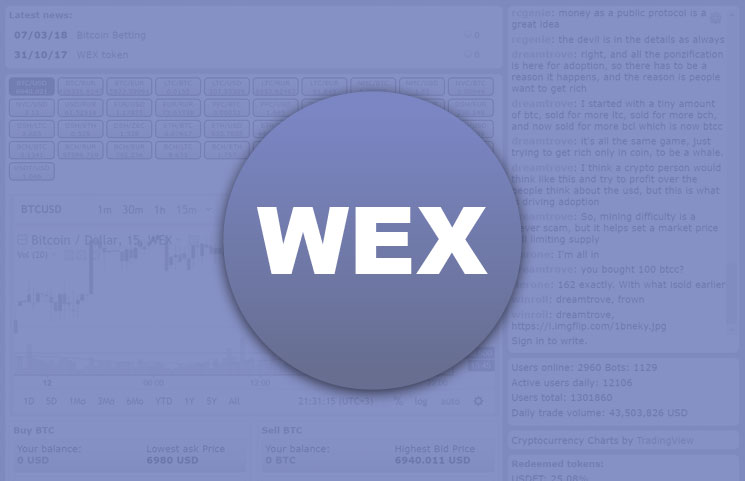
Wex Exchange Review
Wex offers traders a cryptocurrency portfolio with a good selection of digital coins. It is one of a limited number of exchanges that is fiat-friendly, supporting EUR, RUR and USD trades for cryptocurrency. Interestingly, despite being registered in New Zealand and having a corresponding website domain, the platform in fact runs out of Singapore.
The new Wex platform was built in a month, employing many developers who built the original BTC-e site. Adding to suspicion that Wex is linked to BTC-e was the inclusion of the Russian ruble, despite there being any concrete evidence thereof. To date, Wex denies receiving financing from the seized and investigated BTC-e exchange which was shut down in June 2017 by U.S. agents, pursuing various cases of crypto-theft that even included trails from the Mt.Gox looting.
The owner of BTC-e, Russian citizen Alexander Vinnik, was subsequently arrested in Greece and now faces U.S. extradition to answer charges of fraud and money laundering. Interestingly, the U.S. authorities are also alleging that Vinnik gained in some way from the Mt.Gox hack.
While Vinnik denied all accusations including having anything to do with Wex, and statements from BTC-e supported his claims, it appears an open secret in the crypto-community that Wex is simply a replacement site for BTC-e – and an attempt by BTC-e to restore services to its former user base. Although both parties deny any mutual involvement, users point to the almost replica rendering of the original BTC-e design, functionality and trading options built into Wex.
What Is Wex In A Nutshell?
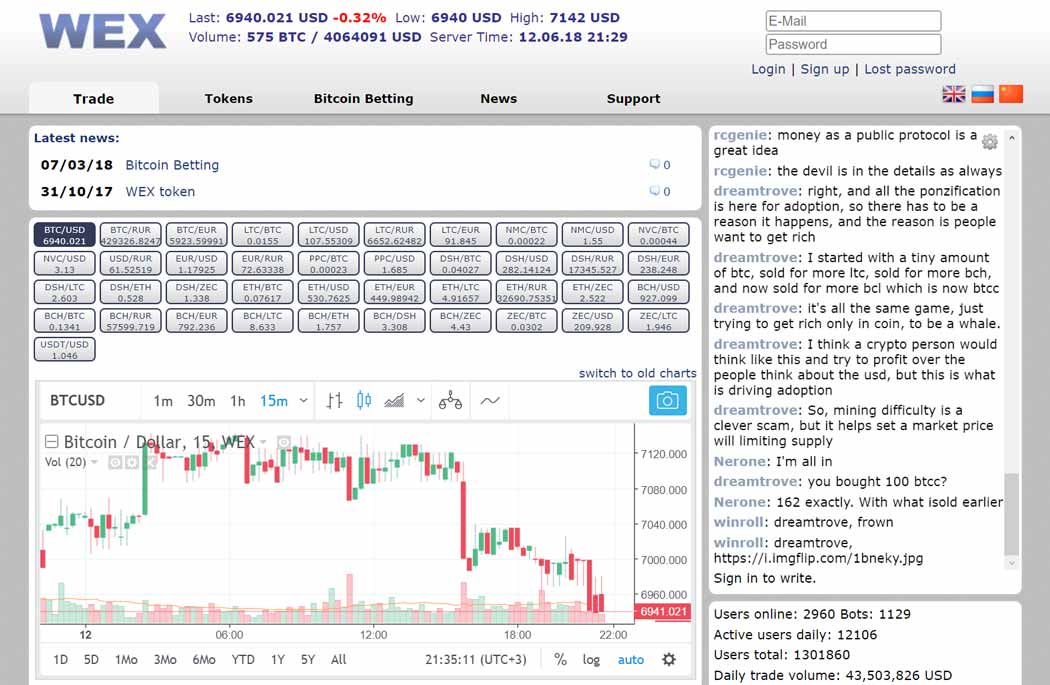
The Wex platform is a digital asset exchange where bitcoin as well as a number of other cryptocurrencies and selected fiat currencies can be traded.
Extensively publicized through social media, the company rewarded early users with small digital payments. In an over-simplified offer, Wex allows a user to complete a basic registration and buy bitcoin and other altcoins with USD and other fiats.
A detailed account isn’t required for a user to trade, increasing the site’s susceptibility to fraud and money laundering. While there have been several promises from the company about complying with KNY and AML legislation, the reality is that none of that applies on this site – and, where it might, the company has completely ignored it.
Encryption and other tight protocols are allegedly in place to protect clients’ holdings, as is usual for a modern crypto exchange. Wex has many payment platforms to choose from when buying-in with fiat currencies. Most are decidedly Russian – not necessarily a bad thing – but the company does appear to have a definite Russian bias. This is at odds with both its country of inception and country of operation, and also wears denials about the BTC-e connection thin.
Wex charges a $100 minimum bank transfer fee when users withdraw funds – ridiculously high – and also a $20 deposit fee.
The exchange doesn’t accept credit card payments, however. Whether this is to aid their collection of transaction fees that can hide behind the term “bank transfer” or simply the product of some other essential protocol remains unclear. What is clear is that the absence of this service is an inconvenience to many users, adding to the growing list of concerns which prevent many people from using the site.
The Problems With Wex

While one might accept the company’s denial of any connection to the former BTC-e exchange, it did take over the entire listed user base from BTC-e in a cosy transaction that must have included hidden details.
Also to be noted is that there is little to no clear information on the site. Most worryingly for a fintech outfit, there is a huge amount of continent hopping and an alarming history taking place in the background. There is also no wallet facility, and although many exchanges operate similarly, fees are indistinct and not transparent on this site, being comparatively quite high.
If the above were not enough, there is an overall “substandard” feel to the online exchange – tabs that disappear, freeze frames that don’t scroll down and pages in Russian that don’t translate.
The BTC-e connection discourse has done more harm than good as it has been ineffectively addressed by the company. One can only imagine the company’s denials are in order to maintain the unregulated anonymity it is currently enjoying.
Traders should note that using an exchange that is an offshoot of an exchange that was previously shut down – and is in no way improved – carries the risk of U.S. authorities again targeting the company. There is bad press, where any company can address thorny issues and make their stance crystal clear. And then there is arrest and prosecution by the FBI, and no clear-headed investor would have anything to do with any company that has demonstrably broken faith.
Wex [wex.nz/exchange] makes lots of noise about registration and compliance, yet its moves show a company dodging identification. Presenting to any experienced surfer as a minimalist site with a threadbare build, bare-minimum facilities and these optimized to glean fees from users, Wex is either a niche gem or simply the minimum requirement for setting up a crypto scam. It remains to be seen what morality and accompanying UX emerges from the exchange’s existence.
Wex Users And The Future
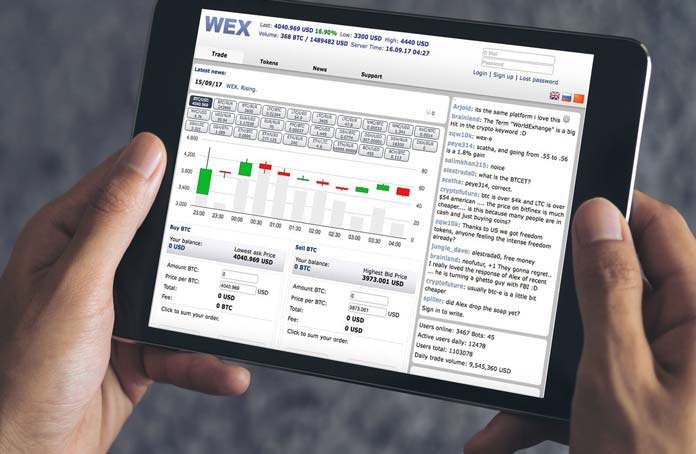
The Wex exchange doesn’t cater for traders seeking leverage, nor does it offer much trading intel in comparison to other similar sites. Comments on forums like Reddit and Bitcointalk are particularly scathing, painting a picture of a company happy to cover itself legally while washing its hands of customers’ issues. With some users calling the company blatant fraudsters and thieves, response histories appear to depict an atrocious absence of manifested fiduciary responsibility from the company’s side.
Wex’s current status as a going concern hinges on its avoiding regulation while having inherited a client base from BTC-e. Although muttering about what a great, transparent company it is going to be, this too seems more of a prop to feign compliance while milking users for heavy transaction fees. Being an unregulated crypto exchange, perpetually swapping out of Russia, New Zealand and Singapore – all locales where the company is unregistered and/or unregulated – doesn’t look good.
Wex Conclusion

Launched in 2017 and bearing a remarkable resemblance to the old BTC-e site, Wex appears to be operating in loopholes with countries and trading practices. If nothing else, it has been suggested that the lack of regulation and many facilities users might expect of such an exchange are missing due to the profit-hunger of the company. Demonstrably targeted to glean as much as possible from users’ participation, avoiding regulation might also be a cost-cutting exercise.
Under Singapore’s laws, cryptocurrencies are deemed securities and their minting and trading requires approval by the Monetary Authority of Singapore (MAS). In addition, anyone issuing digital currencies needs a license derived of the Singapore’s Securities and Futures Act (SFA).
In September 2017, Coindesk posted that Wex was indeed an offshoot of the old BTC-E. Possibly then the largest user group on the exchange is that of former clients who were loyal to BTC-e. Support responses confirm that although intimately involved in transactions as the exchange, if there is a legal closure to a matter they can claim, the company will grab at it. This flies in the face of modern service levels, so much more so in the fintech arena.
As there is zero margin for any spurious activity from fintech companies, whether legacy or crypto-centric, it cannot be recommended that any clear-thinking investor trade on the exchange. Onsite, the team also have a tab called “Bitcoin Betting” – an unwelcome label in the field of technically analyzed speculation.
Wex has its own native coin, released as the Wex coin, in essence a “bonus” token, and one that can be traded on the exchange. Possibly an outlet for those who fancy cavalier and possibly even cowboyish risk dalliance, for the average crypto trader, Wex is rated a high risk exchange, to be treated with due caution and avoided as far as possible
Cryptocurrency Information
Bitcoin Volumes Finally Grow Again and Bitfinex/Tether Issues Spark Systemic Risks, New Diar Report Affirms
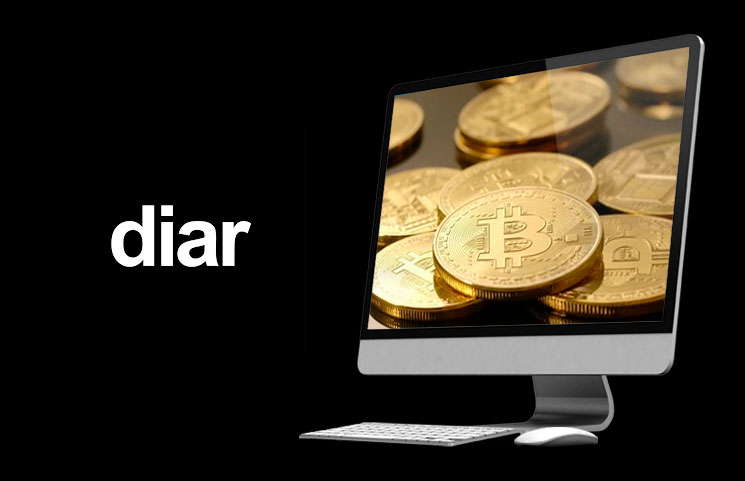
Diar has recently published its report of the crypto market for April. According to the company, Bitcoin volumes are finally growing again and the whole situation with Tether and Bitfinex showed the industry some of its systemic risks. DAI fee hikes and stablecoin projects were also highlighted in the report.
Bitcoin Goes Back To Growing Again
The main highlight of the month is, obviously, that Bitcoin is back on the action. After facing lows which started in 2018, the token has finally been able to effectively reverse the trends and have an actual price surge this month, going from less than $4,200 USD to over $5,200 USD during this short timeframe.
With this, the number of on-chain transactions has spiked for three months in a row, since prices started to get some of their value back in March and April. Now, transaction volumes are around their levels in June 2018 when the price of the asset was around $7,000 USD.
However, charts indicate that Bitcoin is yet to find more footing outside of speculative trading, so the bull market may not be as near as some think.
When looking at the volume of the whole quarters, Q1 2019 had lower volumes than Q4 2018, but Q2 2019 started considerably well.
Bitfinex and Tether Start Concerns of Systemic Risks
As you may have heard, Bitfinex was accused of using Tether funds to cover up its losses. According to Diar, there is a 26% shortfall of in-cash reserves to back Tether tokens (USDT). Tether loaned $850 million USD to Bitfinex to cover up losses and its general counsel Stuart Hoegner has affirmed that the company is operating with fewer reserves than the total market cap of the token.
This happened because Bitfinex had the $850 million USD “seized” by Crypto Capital, one of its payment processors. Unless Hoegner is lying, though, the company had the assets to back the stablecoin until recently.
While it is clear now that Tether simply does not have the money to back the funds, people simply keep buying the tokens. Now, instead of all cash, some shares of Bitfinex are being used to represent the rest of the value, which makes the stablecoin enter securities territory for the first time.
Curiously, the markets are all very tolerant now since the prices are still stable but the systemic risks are clear, especially if other companies are to follow Tether’s path.
DAI Hikes Fees Once More
Another situation highlighted by the reports is that DAI has decided to upgrade its stability fees once again as the community is desperately trying to make the prices of the so-called stablecoin go up again. DAI tokens are being sold for less than $1 USD, their official price, on secondary markets.
At the moment, the fees are 16.5%, after increasing three times in only one month. Before April, the fees were only 7.5%. This has resulted in a decrease of 4.9% in the circulation of DAI tokens.
Stablecoins Eye Wider Use Cases
Gemini and Harbor, a A16Z tokenized securities platform, have started a partnership in order to get more clients for the Harbor stablecoin. However, this was deemed “too soon” by Diar, as Harbor does not have any known token right now. The only one the company had was canceled.
TrustToken is also trying to get more stablecoins on its list, especially the ones that are not focused on USD, but on several other fiat currencies like HKD, CAD or GBP instead.
Cryptocurrency Information
#DropGold Campaign to Hit Your TV, Here’s A Breakdown of the Underlying Bitcoin Message(s)

Grayscale, a leader in digital currency investing, launched an ad on Wednesday, May 1, telling investors that money should be contributed to Bitcoin holdings as opposed to gold. In a number of interviews, CEO of Grayscale’s parent company (Digital Currency Group), Barry Silbert and Managing Director of Grayscale, Michael Sonnenshein, have since expressed the underlying message of the ad.
The #DropGold Ad
According to news outlet, U Today, the ad starts off with a man holding gold bars in his arm, which he decides to drop. While doing so, a woman also does the same. Throughout the ad, people supposedly have their gold bars stacked in shopping carts, while “losing their gold coins.” Watching what’s about to unfold, the two individuals try to find their way out.
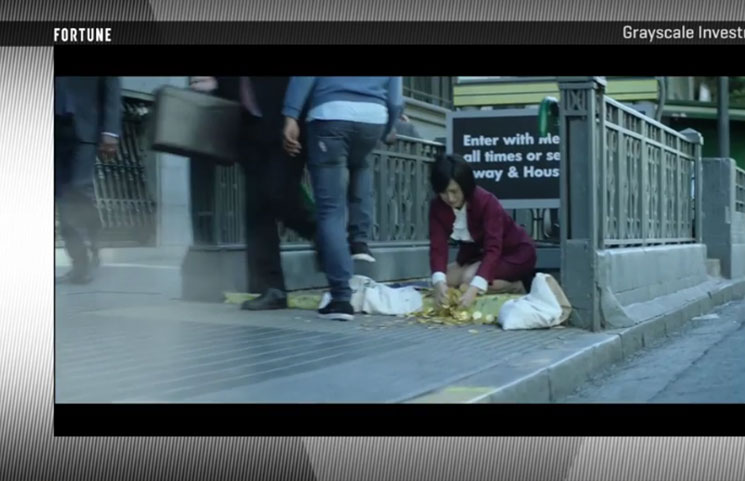
Advertising Bitcoin or Grayscale’s Services?
Despite being the one to have introduced this campaign, Silbert argues that it isn’t entirely about Grayscale services, but rather said services being a result of consumers’ decision. Yahoo Finance has since quoted the following comment made by Silbert himself:
“We do not see this as a Grayscale commercial. For us #DropGold is our ‘Got Milk’. This campaign is first and foremost focused on starting a conversation about bitcoin vs gold. If the ad makes people want to get into Bitcoin, we’re completely indifferent about how they go about doing it.”
Having said this, the commercial is evidently portraying Grayscale as an option, as towards the end, one is told, “Go Digital. Go Grayscale.”
Silbert’s and Sonnenshein’s Arguments Regarding Gold’s Limitations
Silbert believes that this campaign works towards addressing the fact that Bitcoin can serve as an equal asset class as gold, if not better. In particular, he was quoted saying, “But now you have Bitcoin, which, in our opinion, provides all the same attributes as gold – it’s fungible and scarce and you can’t counterfeit it – but the big difference is that Bitcoin has utility. Gold doesn’t have much utility beyond jewelry.”
He further argued that the goal here isn’t to replace fiat currency for shopping purposes, but rather to show the world that Bitcoin does a better job at doing gold’s job and this will be evident in the long run. Although he has acknowledged Bitcoin’s volatility as being concerning, he is hopeful that it will one day serve as both an ideal utility token and store of value.
As for Sonnenshein’s viewpoint, he sees this ad as revealing the “absurdity” associated with gold. More specifically, he said:
“We’re going after a narrative around gold being where investors should go when markets turn south or as a hedge against inflation […] we’re highlighting the absurdity of gold.”
As per The Block Crypto, Grayscale also tries to convince investors that the return earned from redistributing 5% of gold to Bitcoin will be greater than 5% yearly.
What are your overall thoughts on this ad? Did it leave you asking yourself, “Why did you invest in gold? Are you living in the past?” Share your thoughts below!
Cryptocurrency Information
Huobi Pro Bitcoin Exchange: Cryptocurrency Asset Trading Platform?

Huobi Pro Cryptocurrency Exchange
Founded in 2013, Huobi Pro allows for a myriad digital currencies to be exchanged, at a 0.2 percent trading commission. Loyal users point to the low fees and stellar service that make the exchange stand out above others.
Although pitched at dedicated cryptocurrency enthusiasts since the site doesn’t accept fiat currencies many who enter the realm on the back of fiat end up at Huobi Pro, largely due to its diverse offering and favorable fee structure.
Huobi Pro in A Nutshell

A victim of China’s clampdown on digital currencies, the company might be registered in the Seychelles, but was originally founded in Beijing. As testament to the broad appeal of the platform, after the Chinese regime effectively banned all things crypto at the beginning of 2018, trading volumes have only grown.
While at first very much a Chinese company looking at the home market, Huobi Pro has been forced to find a wider marketplace on the international scene. Indeed, even prior to the official cessation of altcoins and their trading, the company heard the rumblings in 2017 and took its cryptocurrency interests abroad.
Huobi now provides exchange services to users in over 130 countries. Company offices are located in the USA, Korea, Japan, Singapore and Hong Kong. Although the Huobi Group also owns and manages the Huobi Autonomous Digital Asset Exchange (HADAX), Huobi Pro is more of a pure “login and trade” exchange.
Users can employ network tokens to cast votes on adding new altcoins on HADAX. On the Huobi Pro exchange, a simplified offer encompassing all of the mainstream altcoins greets visitors. Some more popular coins offered are Bitcoin (BTC), Bitcoin Cash (BCH), Ethereum (ETH), Litecoin (LTC), NEM (XEM), NEO (NEO), Qtum (QTUM) and Ripple (XRP).
That said, when one actually tallies the number of altcoins available for exchange, it becomes apparent why loyal followers value the site. A marriage of both simple ease of use and diversity in trading, the platform is largely welcomed by newcomers and experienced enthusiasts alike. In the current melee of regulation being contemplated, implemented and tweaked all the while, some users may be precluded from trading on the exchange based on their country of residence.
Huobi Pro accepts the funding of accounts only in digital currencies, and accepts deposits in any of its listed altcoins. Unlike other exchanges that have opted for a midway between crypto and fiat, Huobi Pro traders deal strictly in digital coins at every point of a transaction. Funds need to be withdrawn to a wallet, and fiat users looking to buy in will have to establish a wallet first in order to fund their Huobi Pro trading account.
Traders pay a maker or taker fee of just 0.02 percent using the exchange. There are more detailed offers, worth looking at for daily traders with volume.
Huobi Pro Membership Levels

VIP users get preferential platform trading fees if they buy the privilege with Huobi tokens. The Huobi Token (HT) was never an ICO token, but rather a system token that users only obtain by buying “Point Cards” on the Huobi Pro platform. Point Card is essentially a pre-paid Huobi card that keeps users liquid on service fees. One HT = 1 USD, therefore one “point” = 1 USD. The more points purchased, the more free points are added, although savings on 1000 points, for example, means only 10 HT for free.
Huobi Global minted a fixed total of 500 million tokens, with 300 million employed to facilitate the in-house VIP structure. A mark of the business group behind the platform is seen in their practice of buying back-sold tokens from the open market each quarter. Not only that, but those funds go towards the Huobi Investor Protection Fund (HIPF).
This is a planned fund that will compensate investors who suffer platform disruption and subsequent losses. It’s a tool that minimizes risk, smooths out the market overall and also goes towards protecting investor interests. This transparent and pleasing aspect of the platform is one reason traders have confidence in the exchange, and its popularity is rising worldwide.
By way of example, in order to glean a VIP status, a trader will pay 120 HT a month for First Level membership. This enables a 20 percent discount on trading fees. Running through toward the top end, a pricier option of 6,000 HT a month secures a 50 percent discount on fees. Overall, a diligent trader can optimize the system and come out with a substantial discount on the already low 0.02 percent base offer.
The company charges no fees to deposit funds, but there are withdrawal fees. Although there are reviews online listing withdrawal fees, it appears that, especially within the membership structure, users are advised to ascertain exact fees when establishing their account. Likewise, transfer limits need to established upfront to avoid disappointment later. There exist order size limits on the platform too, again becoming more malleable as one moves up the ranks of the VIPs.
Security And UX On Huobi Pro

All of the standard protocols including two-step Google Authenticator verification are at play on the platform. Unlike many other exchanges that offer a simple crypto-exclusive platform, Huobi Pro will need your personal details in the form of a passport copy and chat room comments are not devoid of complaints, although almost all of them take issue with the structure of the platform and its potential pitfalls. There are few allegations of lost funds or other negligence on behalf of the company. On the whole, Huobi Pro seems to be rubbing off its decidedly corporate ethos onto the exchange – good news for traders overall.
Another serious boon for the cryptosphere as a whole is that over 98 percent of holdings are stored in an offline cold wallet or vault. Imbued with a strict customer service ethic, the platform probably sports the best customer service to date for crypto exchanges. Available 24/7 365, there is a live chat option onsite.
The platform intel is sufficient although newbies might have to scratch to paint a clear picture of how exactly everything works. The FAQs are thoughtful and, again, testament to a polished offering. Huobi used to be one of the biggest Chinese crypto exchanges, based in Beijing. Started by entrepreneur Leon Li in 2013, since the move there has been mutual appreciation of its value. Worldwide users have taken to the exchange, as it too realized that it had global appeal.
Huobi Pro Conclusion

Huobi claims to have exceeded BTC 500,000 in daily trading approaching 2014. Although only in its fifth year, that’s a long time in cryptocurrency. Although frequently accused of embellishing trading volumes, these allegations have never been proven. In comparison to other digital exchanges that have suffered persistent user complaints and even been shut down due to criminal activity, Huobi Pro shines.
As an offering, it has low fees, great diversity and an unbeatable crypto-energy. No trader on the platform feels like they’re missing out on something else somewhere else, by most accounts. Possibly due to their prior involvement in the fintech world, the platform got it right first time around and user numbers prove it. The company Huobi also owns another trading platform, BitYes, more focused on USD/BTC and USD/LTC pairs trading. Great customer service and minimal technical glitches have made it appear positively top-tier, again in comparison to less polished outfits.
With a detailed offering, great client liaison – very unusual for most digital exchanges so far – and no legitimate proof of anything even vaguely dark hanging about them, the Huobi Pro project is recommended. Users are advised to always ascertain costs prior to trading – not hard with the customer support in this case – and sample a platform with small trades before trading greater amounts. To learn more, you can head to their official website: huobi.pro










